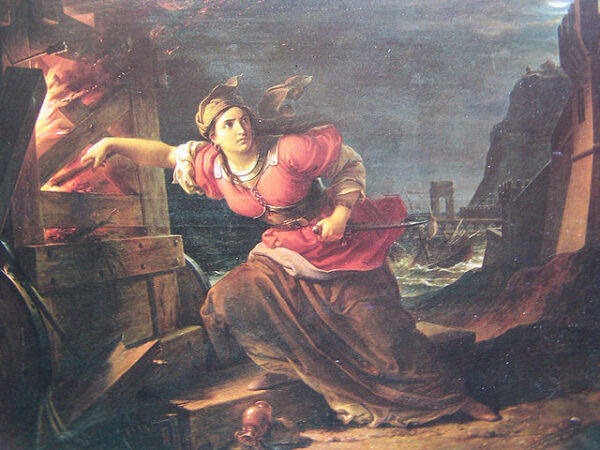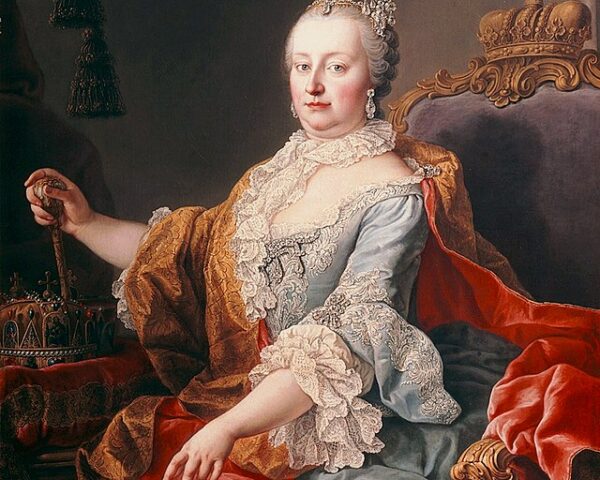The Adriatic port city of Ancona, perched on Italy’s eastern coast, stood in 1173 as one of the last bastions of independence against the encroaching power of Emperor Frederick I Barbarossa. Already scarred by repeated wars with imperial forces and their Lombard allies, Ancona’s people were determined to resist. That summer, Frederick’s German troops and the soldiers of the neighboring commune of Fermo invested the city, hoping to starve it into surrender. The siege dragged on for weeks, with hunger gnawing at the inhabitants and exhaustion sapping their defenses. But it was in this moment of desperation that a figure little remembered in chronicles of kings and emperors emerged to save the city: a widow named Stamira.
Almost nothing is known of Stamira’s life before that September day—no noble lineage, no high office. She was a woman of the people, a widow, anonymous in ordinary times. But the annals of the siege recall her as a figure of extraordinary resolve. According to tradition, the imperial besiegers had constructed a wooden siege tower, reinforced and covered to resist arrows, which they rolled toward Ancona’s walls. If it reached the ramparts, the city would likely fall. The defenders, stretched thin and lacking resources, saw little chance of stopping the ponderous machine.
Stamira, recognizing that delay meant destruction, took matters into her own hands. Gathering a vessel of pitch, resin, and other flammable materials, she slipped out from the safety of the walls in the dead of night. Accounts describe her moving with almost supernatural calm, carrying the fuel and a torch. Reaching the base of the great tower, she poured out her incendiary mixture and set it alight. Flames roared upward, consuming the wooden structure. But Stamira did not escape. Whether by accident or design, she perished in the blaze she had kindled, sacrificing her own life to save her city.
The sudden conflagration spread panic among Barbarossa’s forces. Siege equipment painstakingly built was reduced to cinders before their eyes. The defenders of Ancona, inspired by Stamira’s courage, surged against the disordered besiegers. The balance of the campaign shifted: no longer passive victims, the citizens fought with renewed fury. By September 1, 1173, the imperial forces abandoned their effort. The siege of Ancona was lifted, and the city’s independence preserved for another generation.
Stamira’s death was not merely a military act—it became a civic legend. Chroniclers in Ancona hailed her as the very embodiment of patriotic sacrifice, a woman who gave her life for the liberty of her community. In a medieval world where chronicles often ignored the contributions of commoners, her deed stood out. Later centuries would preserve her story in local histories, poems, and even in civic pageantry. Statues and monuments erected in her memory ensured that the people of Ancona would not forget the widow whose courage saved their walls.
The tale of Stamira resonates with the broader currents of twelfth-century Italy. The cities of the Lombard League, of which Ancona was a staunch member, were locked in a struggle for autonomy against the Holy Roman Emperor. The communal spirit that animated resistance often depended not on princes or professional armies, but on the willingness of ordinary men and women to defend their homes. Stamira’s sacrifice became a symbolic reminder that civic freedom demanded not just strategy or treaties, but also the willingness of individuals to risk all.
In the centuries since, historians have debated how much of the tale is embellished legend and how much reflects sober fact. Was there truly a widow Stamira who gave her life in flames, or was her figure elevated as a moral exemplar of communal devotion? The truth is elusive. Yet even if some details have been embroidered, the heart of the story reflects the lived experience of besieged cities: the desperation, the ingenuity, and the capacity for heroism among the most unexpected actors.





